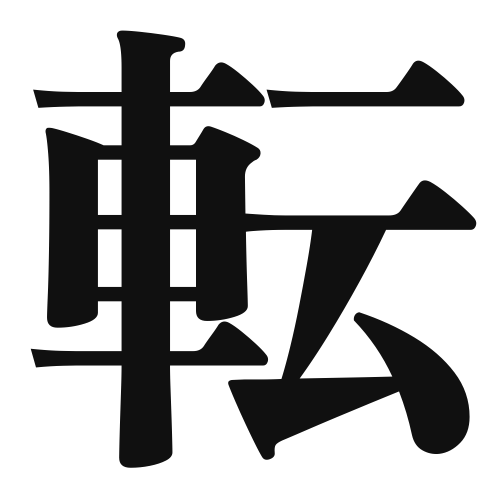1. Overview of Meaning
The kanji “転” (ten) primarily means “to turn” or “to roll.” It conveys the idea of movement or change in direction, often associated with physical rotation or metaphorical shifts in circumstances.
2. Formation and Radical
Formation of the Kanji: The kanji “転” is a compound character (会意文字) that combines elements to convey its meaning. It consists of the radical for “wheel” (車) and the phonetic component “ten” (転), which together suggest the action of turning or rolling.
Radical: The radical of “転” is 車 (kuruma), which means “car” or “vehicle,” reinforcing the concept of movement.
3. Examples of Usage
Common Words and Phrases: Some frequently used words that include “転” are:
- 転職 (tenshoku) – job change
- 転校 (tenkō) – school transfer
- 転倒 (tentō) – falling over
Example Sentences in Daily Conversation:
- 彼は転職を考えています。 (Kare wa tenshoku o kangaeteimasu.) – He is considering a job change.
- 子供が転んでしまった。 (Kodomo ga koronde shimatta.) – The child fell over.
4. Synonyms and Antonyms
Similar Kanji: A similar kanji is “回” (kai), which also means “to turn” but often refers to a circular motion or repetition, while “転” emphasizes a change in position or direction.
Opposite Kanji: An antonym for “転” could be “固定” (kotei), which means “to fix” or “to stabilize,” indicating a lack of movement or change.
5. Cultural and Historical Background
Relation to Japanese Culture: The concept of “turning” is significant in various aspects of Japanese culture, including traditional arts and practices that emphasize change and transformation.
Proverbs and Idioms: One common saying is “転ばぬ先の杖” (korobanu saki no tsue), which translates to “a cane before you fall,” meaning it’s wise to prepare for potential difficulties ahead.
